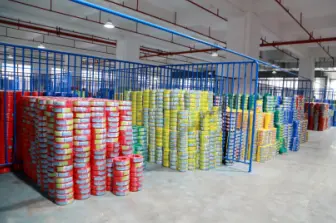How to Identify Low-smoke Halogen-free Cable?
With the development of society, the requirements for wires and cables are also increasing, and the classification of wires and cables is becoming more and more detailed. Such as fire-resistant, flame-retardant, low-smoke and halogen-free wires and cables also appear in our daily life. So how to distinguish these wires and cables? How do we identify LSZH cables?
1. Product name identification method of identification method of low-smoke halogen-free cable
Wire - low smoke halogen free flame retardant polyethylene insulated wire and cable; cable - low smoke halogen free flame retardant polyethylene insulated low smoke halogen free flame retardant polyethylene sheathed power cable. The imitations of low-smoke halogen-free cables generally have a slightly different name, such as polyethylene insulated low-smoke halogen-free sheathed flame-retardant power cables and so on.
2. The identification method of low-smoke halogen-free cables is the skin burning method
Use a soldering iron to iron the insulation layer of the low-smoke halogen-free cable without obvious depression. If there is a large depression, it means that the material or process used for the insulation layer is defective. Or use a lighter to grill. Under normal circumstances, it should not be easy to ignite. After a long time of burning, the insulation layer of the cable is still relatively complete, there is no thick smoke and irritating odor, and the diameter has increased. If it is easy to ignite, you can be sure that the insulation layer of the cable is not made of low-smoke halogen-free material (probably polyethylene or cross-linked polyethylene material). If there is a large amount of smoke, it means that the insulating layer is made of halogen-containing material. If the insulation surface of the low-smoke halogen-free cable falls off seriously and the diameter does not increase significantly after burning for a long time, it means that the appropriate irradiation cross-linking process has not been carried out.
3. Hot water immersion method for the identification method of low-smoke halogen-free cables
Soak the core or cable of the low-smoke halogen-free cable in hot water at 90°C. Under normal circumstances, the insulation resistance will not drop rapidly and remain above 0.1MΩ/Km. If the insulation resistance drops rapidly or even lower than 0.009MΩ/Km, it means that it has not undergone proper irradiation cross-linking process. (Polyethylene or cross-linked polyethylene insulation materials are not identified by this method, and can be identified by the method in the second item above).
Another method for identifying LSZH cables is the density comparison method. The material density of low-smoke halogen-free cable is higher than that of water, and a little insulating layer can be peeled off and put into water. If it floats above the water surface, it is definitely not the material of low-smoke halogen-free cable.
Latest News & Blog
 English
English  français
français  Deutsch
Deutsch  العربية
العربية  tiếng việt
tiếng việt  ไทย
ไทย  čeština
čeština  Indonesia
Indonesia  Eesti
Eesti  български
български  slovenčina
slovenčina 



